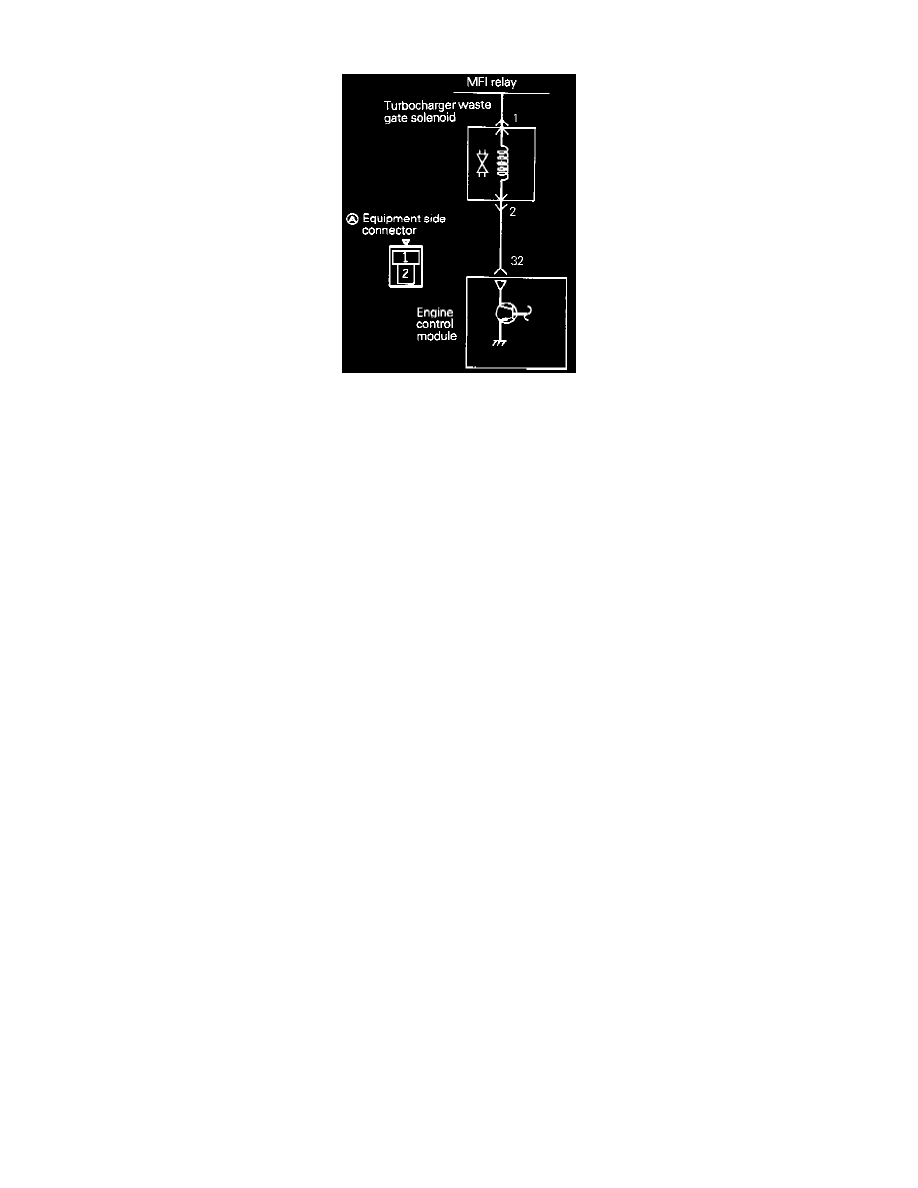Stealth R/T Turbo V6-2972cc 3.0L DOHC Turbo (1996)

Wastegate Solenoid: Description and Operation
Wastegate Solenoid Circuit
PURPOSE
The Wastegate Solenoid allows the Engine Control Module (ECM) to reduce boost pressure. This is to maintain optimum boost pressure under all
driving conditions and prevent engine damage during component failures or detonation.
DESCRIPTION
The Wastegate Control Solenoid valve is an electromechanical, vacuum switching valve. It reduces boost pressure fed to the wastegate actuator
from about 12 to 8 PSI.
OPERATION
The Wastegate Solenoid is spring loaded in the closed (lowest boost) position until after the engine is started. The solenoid is powered by the
control relay. The ECM completes the circuit to ground (highest boost) while the engine is running.
When the solenoid is energized, boost pressure to the wastegate actuator is bled back to the air filter housing and the wastegate stays closed.
When the ECM detects detonation or sensor failure, the ground circuit is interrupted, solenoid turns off and full manifold pressure is applied to the
wastegate.
The ECM uses the following vehicle load condition inputs to regulate the on off signal to the solenoid:
^ Detonation sensor
^ Air flow sensor
^ Engine RPM
^ Barometric pressure sensor
^ Intake air temperature sensor
The ECM does not control boost pressure it only regulates it during failures of the control components.
